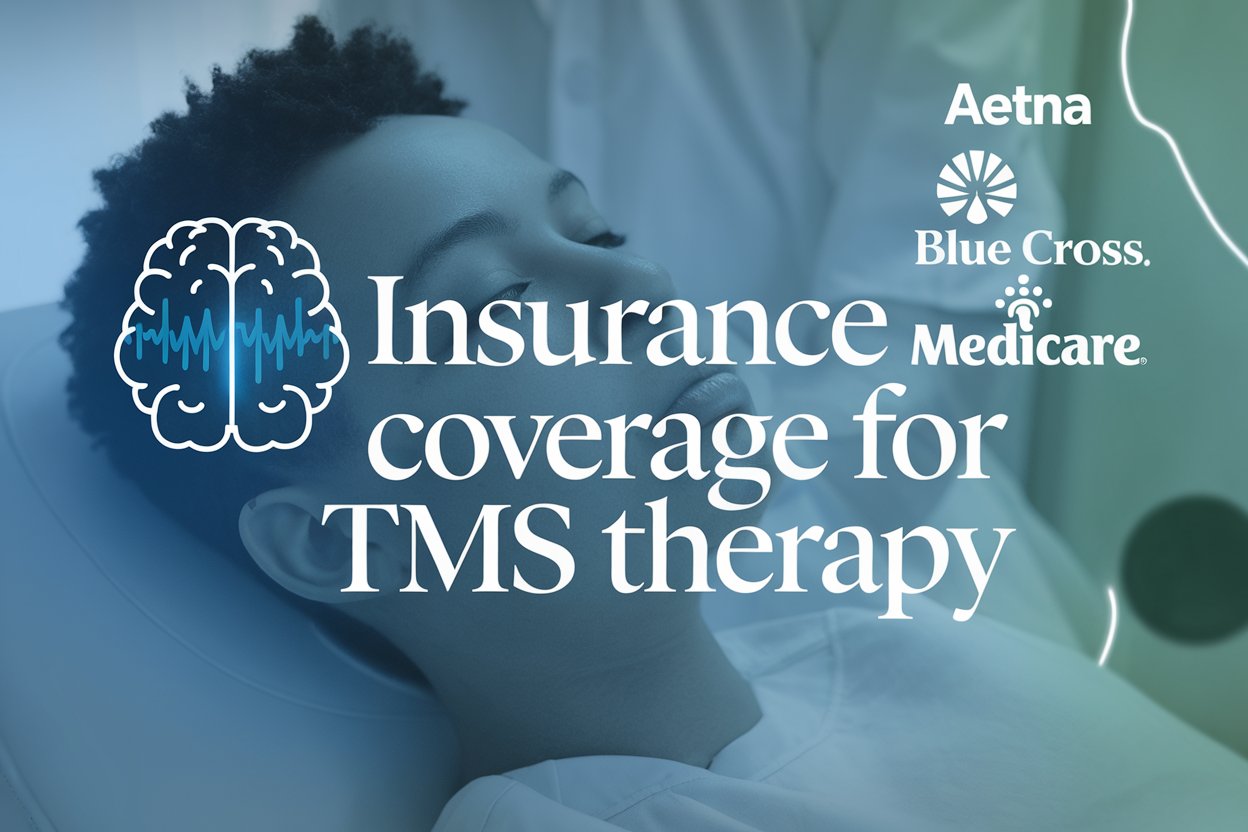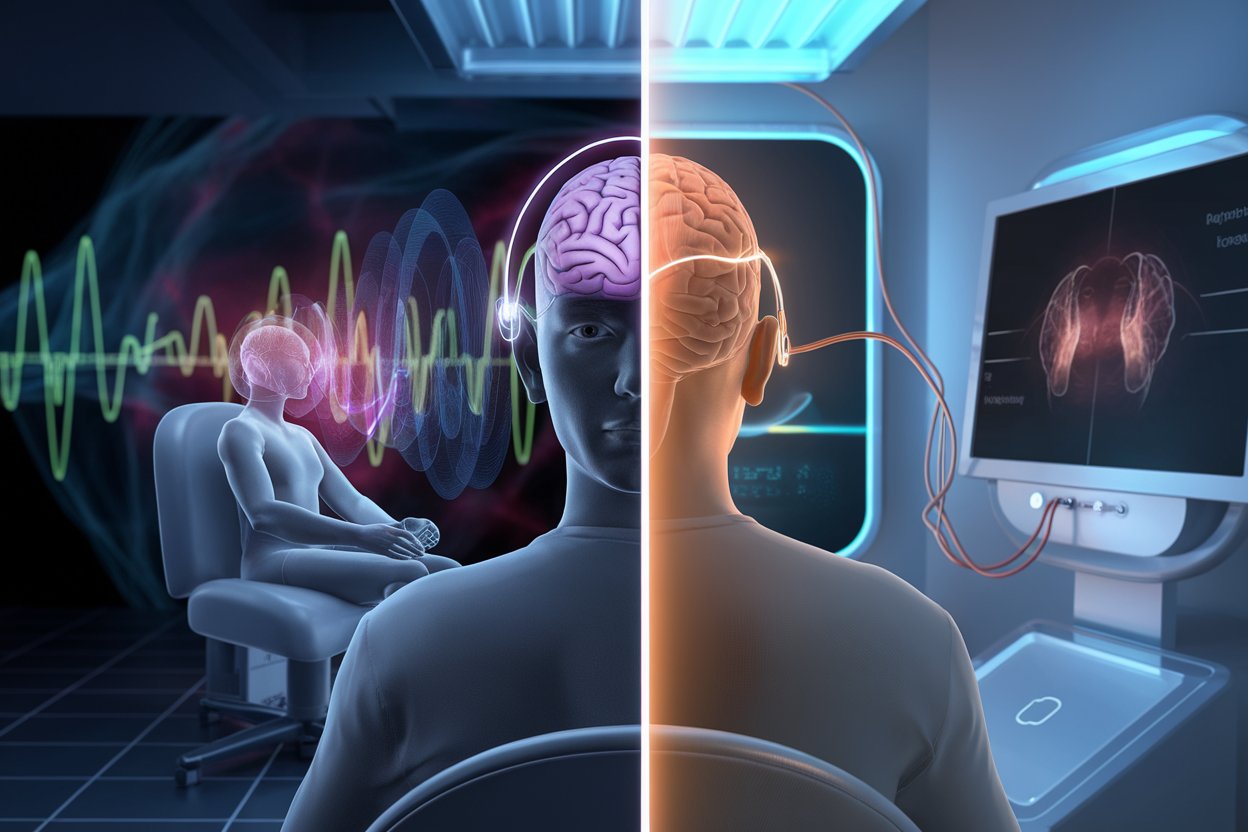Introduction to TMS Healing: A New Horizon for OCD Management
Transcranial Magnetic Stimulation offers a new way to treat Obsessive-Compulsive Disorder (OCD). Unlike regular medication, TMS doesn’t change your body’s chemistry. It uses magnetic fields to activate nerve cells in the brain that affect OCD symptoms. It’s like a gentle push for your mind, helping it to change the way it handles the same thoughts and actions that can make life difficult for people with OCD.
It’s very advanced and avoids the usual side effects of traditional medicine. If you’re feeling stuck or want options besides medication, TMS offers a hopeful new way to help manage OCD.
Understanding OCD: Symptoms and Traditional Treatments
Obsessive-Compulsive Disorder (OCD) causes people to have unwanted thoughts or fears (called obsessions) and makes them feel the need to do specific actions (called compulsions) to feel relief from these thoughts. You might see someone washing their hands a lot because they are worried about germs or checking the stove several times to make sure it’s off.
These actions interrupt everyday life, but people affected feel unable to stop them. Traditionally, treatments have leaned heavily on medication and psychological therapy. Medications help balance brain chemistry, but they’re not a complete solution. The side effects can be tough. On the other hand, therapies like Cognitive Behavioral Therapy (CBT), especially a type called Exposure and Response Prevention (ERP), have shown good results.
They mean confronting the fear without acting on the urge. But these choices don’t fit everyone. Some people have trouble finding the right medication, dealing with side effects, or fully participating in therapy. This is where alternative treatments like transcranial magnetic stimulation (TMS) can help, bringing hope to those looking for relief.
What is TMS Healing? An Overview
TMS Healing means Transcranial Magnetic Stimulation Healing. It’s a safe method that doesn’t cut the skin or go inside the body. It uses magnetic fields to activate nerve cells in the brain. It’s like a soft push to your brain, helping it to change how it works. It is mainly used to treat Obsessive Compulsive Disorder (OCD) and other conditions when standard treatments are not effective. No medication, no surgery.
A focused magnetic field that targets the parts of the brain related to OCD. The treatment requires you to sit under a device that looks like a special hat for 20 to 40 minutes. It’s easy and doesn’t cause any pain. Many people notice a big change in their symptoms after a few weeks of sessions. TMS Healing gives new hope to people with OCD, showing that sometimes the best help doesn’t come from medication.
The Science Behind TMS Healing: How It Works for OCD
Transcranial Magnetic Stimulation is a breakthrough treatment for people with OCD. It uses magnetic fields to activate nerve cells in the brain. Think of a light push to the parts of the brain that manage OCD symptoms. It’s non-invasive, so there are no surgeries or frightening procedures involved. When the brain’s faulty circuits receive this magnetic help, they begin to work more properly.
The process is simple. Sit back and relax while a device sits on your head, sending magnetic pulses. These pulses help lessen OCD symptoms over time, making things feel easier to handle. It’s like teaching your brain to adjust and get used to a new way of living. What’s great about it? It is supported by scientific research and has shown good results for people who haven’t found help through medication.
Comparing TMS Healing to Conventional OCD Treatments
Common treatments for OCD typically include medications and therapy, mainly using SSRIs (a type of medication) and CBT (a type of therapy). SSRIs help balance brain chemicals, which may lessen OCD symptoms. CBT allows patients to face their fears in a safe setting to help them become less sensitive to those fears over time. Some patients do not respond well to these treatments. They may find them ineffective or have trouble with side effects from the medications.
This is where TMS (Transcranial Magnetic Stimulation) is useful, providing a new way to look at things. TMS uses magnetic fields to activate nerve cells in the brain, targeting areas related to OCD. It’s a method that doesn’t require surgery or implants, so it’s attractive to those who are hesitant about traditional treatments.
Also, TMS has shown good results, as some patients say their OCD symptoms have greatly improved after treatment. Unlike medication, TMS targets only certain areas of the brain without affecting your entire body with chemicals. This reduces the chance of side effects.
In simple terms, comparing TMS to traditional OCD treatments is like comparing a specific, focused treatment to a more general one. SSRIs and CBT are helpful for some people, but TMS gives new hope for those who haven’t found relief with usual treatments. It’s about giving your brain a fresh start in handling OCD, without the common effects of medication.
A Step-by-Step Guide to the TMS Healing Process for OCD Patients
Transcranial Magnetic Stimulation provides a fresh hope for OCD sufferers outside of the typical treatment and medication regimens. To help those who are struggling with OCD, let’s dissect the TMS treatment process into easy-to-understand steps.
Step1:
You’ll have a first meeting with a TMS expert. They will check your medical history, talk about your OCD symptoms, and see if TMS is right for you.
Step2:
Now it’s time to create a treatment plan. Your specialist will identify which parts of your brain to focus on based on your symptoms. This is important because TMS focuses on certain parts of the brain that cause OCD symptoms.
Step3:
You will begin the treatment sessions. Sit comfortably in a chair while a device is placed over your head. This device will send magnetic signals to specific parts of your brain. Sessions typically last 30 to 60 minutes, are not harmful, and you can continue your day afterward. Most treatment plans need you to attend sessions 5 days a week for 4 to 6 weeks.
Step4:
Next, track your progress. Throughout the procedure, your specialist will monitor your symptoms and make any necessary modifications.
Step5:
Finally, following your TMS course, you will talk with your specialist about any next steps, such as additional sessions, going back to medication, or using alternative therapies. TMS is a treatment that doesn’t involve drugs or surgery, and many patients say it really helps reduce their OCD symptoms. Keep in mind that TMS is not an easy solution, but it can be a hopeful choice for people looking for help with severe OCD symptoms.
Real-Life Success Stories: TMS Healing and OCD
OCD is a difficult challenge. It hangs on, turning each day into a struggle for those who deal with it. There’s good news with Transcranial Magnetic Stimulation (TMS)—and real people are showing that it can be effective. For example, let’s look at Alex. After years of therapy and medication without much change, TMS made a big difference for him. In just a few weeks, his urges lessened, and he began to enjoy life once more.
Then there’s Jamie, who has had serious OCD since they were young. After TMS treatment, Jamie said her OCD symptoms improved a lot and described the treatment as a miracle. These aren’t just one-time incidents. Many people are sharing their experiences of overcoming OCD with the help of TMS. It’s not just words; it’s actual change. The success of people like Alex and Jamie shows how TMS can change lives for the better.
What to Expect: Benefits and Possible Side Effects of TMS Healing
TMS, or Transcranial Magnetic Stimulation, is a hopeful option for OCD patients who are not finding relief with traditional medications. It uses magnetic fields to activate nerve cells in the brain. This can help lessen OCD symptoms when other treatments haven’t been effective. You can expect to see a big decrease in how often and how strongly OCD thoughts and behaviors occur. Patients often say they feel more in control of their lives and experience a sense of peace and focus that they didn’t have before.
But TMS isn’t a perfect solution for everything. Many people have positive experiences, but there can be some mild side effects. These can include headaches, discomfort on the scalp where the treatment is done, tingling, or feeling dizzy during or after the treatment. TMS rarely causes seizures, but this is very uncommon. Keep in mind that it’s important to consider these short-term struggles compared to the chance of having a happier and easier daily life.
How to Know if TMS Healing is Right for You: Evaluating Your Options
To find out if TMS Healing is right for you, take a moment to reflect and talk with your doctor. If medication and regular therapy haven’t worked for your OCD, or if the side effects are too tough to handle, TMS could be a good option for you. Here’s how it is: TMS, which stands for Transcranial Magnetic Stimulation, is a non-invasive treatment. No surgery and no needles needed.
You sit there, and a device sends magnetic pulses to wake up your sleepy brain areas responsible for OCD. Now, see if you meet these criteria. If you’ve tried many medications without improvement, TMS might be a helpful option for you. Or if you want to try a method that doesn’t include taking more pills. It’s important to talk openly with an expert who understands TMS well. They can help you understand the advantages and disadvantages and give advice based on your situation. It’s about helping you live a life free from OCD by knowing all your options.
Looking Forward: The Future of OCD Treatment with TMS Healing
The future of treating OCD looks promising with the introduction of TMS Healing, which means Transcranial Magnetic Stimulation. This new technology is changing the game by providing an alternative to regular medicine and therapy. What’s the importance of TMS? First of all, it doesn’t require any surgery or physical intrusion. This means you won’t need surgery or medications that could have many side effects.
TMS focuses on certain parts of the brain that are related to OCD. It uses magnetic fields to help these areas, reducing or even stopping OCD symptoms for many people. It’s like pressing a reset button for your brain. Another benefit? TMS treatments are fast and do not need any recovery time. You can have a session and continue with your day as usual.
Research is showing positive results. Many people who didn’t get much help from medications or therapy are finding great improvements with TMS. This means TMS isn’t just another choice; it could really help people who have OCD.
Looking ahead, TMS Healing could be very effective in treating OCD. With continued study and improvement, it will soon be a common treatment. If you’re struggling with OCD, TMS may provide you with hope. An opportunity to escape the ongoing problems and side effects.
In summary, future OCD treatment will focus on more than just controlling symptoms. It’s about providing new ways to heal. With TMS, we are entering a new time in mental health care where recovery is not just possible; it’s attainable.






